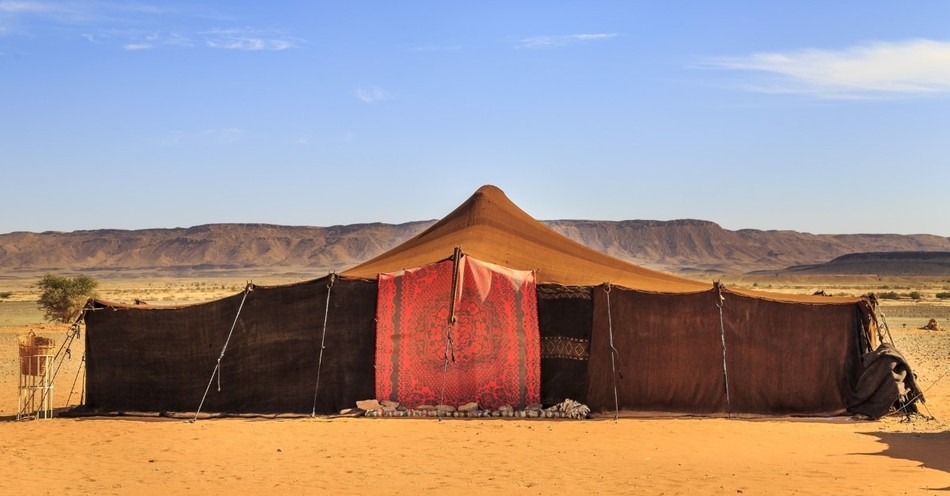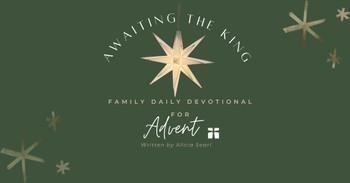God isn’t returning for individuals but for a people. We come to God as individuals but enter a community of faith, God’s family across time and space, just as we’re born a single infant into a prearranged earthly family with parents and extended relatives for us to discover and gather with.
The Lord first promised Abraham countless descendants, which required a miracle son. Jesus’ ministry engaged with individuals but gathered them as a community of disciples, and Acts further reveals the birth and development of God’s Church. In the end, Christ gathers all saints as his unified Bride.
As one of the three main Old Testament feasts, the Feast of Tabernacles (or Ingathering) contains deep symbolism and meaning about God’s heart and our identity as his people.
What Is the Biblical Origin of the Feast of Tabernacles?
The Feast of Tabernacles (also called Sukkot or Feast of Ingathering) originates in the Old Testament as one of Israel’s three main pilgrimage feasts, along with Passover and Pentecost. God commanded Israel to observe the Ingathering in Leviticus 23:33-43, Deuteronomy 16:13-17, and Numbers 29. The Lord established this as a seven-day celebration beginning on the 15th day of the seventh month, following the Day of Atonement (or Yom Kippur). Pentecost marked the first fruits of the harvest season, and the Feast of Tabernacles celebrates the final harvest, also why it’s called the Feast of Ingathering.
In the biblical calendar, the Feast of Tabernacles is the final of the three main feasts. Passover celebrated Israel’s deliverance from Egyptian slavery. Pentecost remembered God giving Moses the Law at Mount Sinai and the beginning of the harvest in spring. After the Feast of Trumpets and Day of Atonement, the Feast of Tabernacles symbolizes a type of completion, a full harvest, while giving thanks for God’s spiritual provision (God’s presence and faithfulness to provide in the wilderness). During the three main feasts, all Israelite men were commanded to appear before God at the Mosaic Tabernacle (Deuteronomy 16:16), later shifting to Solomon’s Temple in Jerusalem.
How Did Israel Observe the Feast of Tabernacles?
Following the instructions God gave through Moses, Israel celebrated the Feast of Tabernacles with joy and praise. Beginning on the 15th day of Tishrei, the seventh Hebrew month, the festival lasted for seven days. On the eighth day, Israel had a sacred assembly with corporate worship. It symbolized a couple important ideas. In the Promised Land, they celebrated God’s provision at the end of the agricultural harvest. At the same time, they lived in tents to remember God’s past provision in the wilderness.
Each Israelite family would build a sukkah, a booth or hut with leafy branches, open to the sky. They lived in these booths for all seven days of the festival to remember how the ancestors lived in tents after leaving Egypt, like Abraham lived in tents. The people would gather at the Tabernacle, God’s dwelling place in a massive tent. After David moved the Ark of the Covenant to his tent just outside Jerusalem and Solomon built the Temple, the people gathered in Jerusalem, becoming the tradition from that point on.
Gathered Israel would offer sacrifices at the Temple, as the Law dictated. These included a decreasing number of bulls—starting with thirteen on the first day, twelve the second, and so on until the end, with seven on the seventh day. The total 70 bulls may have symbolized the Old Testament belief in the 70 nations of the world (table of nations in Genesis 10). The eighth day closed the festival.
Over time, particularly during the Second Temple period and the return of the exiles, Jewish leaders added other traditions. One addition was the water drawing ceremony (in Hebrew, Simchat Beit HaShoevah), where priests brought water from the Pool of Siloam and poured it at the Temple altar while worshippers sang and rejoiced. Also, they started including the Four Species (branches of palm, willow, and myrtle bound with a citron fruit). They waved these in six directions as an act of praise, acknowledging the Lord’s rule and reign over all nations and creation.
After the destruction of the Second Temple (70 AD), sacrifices stopped, but Jews continue to celebrate the Feast of Tabernacles with services in their synagogues, building booths, and reading Ecclesiastes to meditate on the temporary, transitory nature of life.
How Did Old Testament Prophets Later Point to the Feast of Tabernacles?
King Solomon dedicated the Temple in Jerusalem during the Feast of Tabernacles. In 1 Kings 8, Solomon gathered Israel during the seventh month. After putting the Ark in the Holy of Holies, Solomon led the people in sacrifices and worship, even extending the feast another seven days, fourteen total.
Centuries later, after the Babylonian exile and return during the Persian Empire, the Feast of Tabernacles became a symbol of God’s faithfulness and a sign that the Lord would dwell with his people again.
Ezra 3:1-4 records an important post-exilic moment. Though the Second Temple hadn’t been rebuilt, the returning Jews gathered in the ruined Jerusalem in the seventh month. They rebuilt the altar first and started offering sacrifices, those meant for the Feast of Tabernacles. Upon returning to Jerusalem, Ezra the priest had the people reestablish right worship before any other repairs.
Nehemiah (a contemporary of Ezra’s) 8:13-18 also includes an account of this. After reading the Law aloud to the people, Ezra and the leaders realize the command for the people to dwell in booths during the feast had been dismissed or neglected. The people obeyed, gathering branches and building shelters around the city—rooftops, courtyards, and the squares. Nehemiah remarks how this level of joyful feasting hadn’t happened since the days of Joshua. The feast, representing a final harvest, becomes associated with the return of people instead of crops, gathering once again in a revival and restoration after the exile.
Another contemporary of this time, the prophet Zechariah, used the Feast of Tabernacles to extend God’s Word to reach the entire world. In Zechariah 14:16-19, he predicted that after the Day of the Lord, all surviving nations would come to Jerusalem each year to worship the King of the creation, the Lord of Hosts, and celebrate the Ingathering together. This vision connects the Feast of Tabernacles with the coming Messianic Kingdom, when God would reign over the earth, his Kingdom one made of people of all nations.
Therefore, it would make sense to see the Feast of Tabernacles in the New Testament, the inspired record of Jesus the Messiah and his people.
Does the New Testament Mention the Feast of Tabernacles?
The Feast of Tabernacles is mentioned clearly in John 7, where Jesus attends the feast in Jerusalem. First, his brothers tried to get him to go to Jerusalem for Sukkot, to prove he was the Messiah. He declined to go as they wanted, but he did travel to Jerusalem for the Festival of Shelters, or Tabernacles, in secret at first. Jesus later begins teaching openly in the Temple courts. On the last and greatest day of the feast, Jesus stands up and declares, “If anyone thirsts, let him come to Me and drink.” (John 7:37) Christ is using the symbolism of the water drawing ceremony we mentioned above. Jesus uses this tradition to declare himself the source of Living Water, pointing to the Holy Spirit two verses later. The Spirit fulfills the meaning of the feast, God’s ultimate presence and provision of himself in a people.
The book of Acts doesn’t mention the Feast of Ingathering, but it does show Jewish believers continuing to participate in Temple events, which would have included Sukkot. The Christians would have likely used the feast to teach on the Holy Spirit and the end times promised by Jesus.
Revelation includes the themes of the Feast of Tabernacles. Jesus fulfilled Passover as the Lamb who takes away the sin of the world. Christ fulfilled Pentecost by sending the Holy Spirit (instead of the Law) and birthing the Church as first fruits of the spiritual harvest Jesus taught about. Revelation brings in the fulfillment of the Feast of Ingathering, the final harvest. After the trumpet judgments (Revelation 8-11), the vision leads to a scene of judgment and a harvest of souls, a final ingathering of the redeemed of all nations (Revelation 21), all consistent with Zechariah’s prophecy. In Revelation, God dwells with his people permanently. “Behold, the tabernacle of God is with men.” (Revelation 21:3) The language clearly connects with a final Sukkot. God himself has constructed a booth, a tent, and it is his new creation people across all time.
Prayers for the Feast of Tabernacles
Christians can pray through the themes of the Feast of Tabernacles, reminding us that God dwells with his people now, just as he did in the wilderness and will forever in the future Kingdom. Here are a few sample prayers along these lines.
1. Prayer of Thanks:
“Father, thank you for your provision. As Israel gathered in joy after the harvest, we, too, gather to thank you for your faithfulness. You have never failed to provide. Teach us to trust you and remember that every good gift comes from you.”
2. Prayer for God’s Presence:
“Lord, just as you dwelt with your people in tents, draw near to us now. Make our hearts your home. Let your Spirit fill us with peace, joy, and power. Live in our homes, our churches, and our lives as a testimony of Your grace.”
3. Prayer for Being Pilgrims in this World:
“God, remind us that we sojourn like Israel in the wilderness. We travel through this world looking toward the promised inheritance. Help us not to grow too comfortable here, but to live with hope, holiness, and urgency.”
4. Prayer for the Nations:
“Lord of Hosts, you promised all nations would one day come to worship You. Draw the nations to your Son. Let your Gospel gather people from every tribe and tongue to worship you in joy and truth.”
Should Christians Celebrate the Feast of Tabernacles?
Jews around the world observe Sukkot with joy and tradition. Many Jewish families still build booths or shelters, their roofs made with branches. They eat meals and sleep in these shelters, remembering how God made the Israelites live in tents in the wilderness, yet he provided. They don’t make sacrifices, but the Jews today will have prayers and sing songs with Torah readings. On the last day, they pray and ask for blessings.
Christians aren’t required to observe the Feast of Tabernacles. In Christ, we have the substance the symbol points to. However, we are free to celebrate it. Participating in a local synagogue during Sukkot will give a deeper understanding of the feast, and God may reveal great insights about himself and his people as we submit to the Jewish observance.
We could also observe the Feast of Ingathering in a spiritual or creative way, reflecting on its complex biblical meaning. Christians can focus on the idea of God’s complete, final provision while we live in this world. We can meditate on the temporary nature of this world, and how God dwells within us by his Spirit on the journey to the final promise. And of course, we should remember the final ingathering and harvest of the Father upon Jesus’ return and establishing his Kingdom forever. Some Christian groups build booths and hold special worship services during this time in the fall.
While not a mandate under the new covenant, using the symbols or participating in the feast with respect can give more clarity and revelation, strengthening our faith to continue living with God and his redemptive story.
Peace.
Read More about the Feast of Tabernacles:
Feast of Tabernacles: Bible Story and Christian Meaning
Photo Credit:©GettyImages/pixinoo





